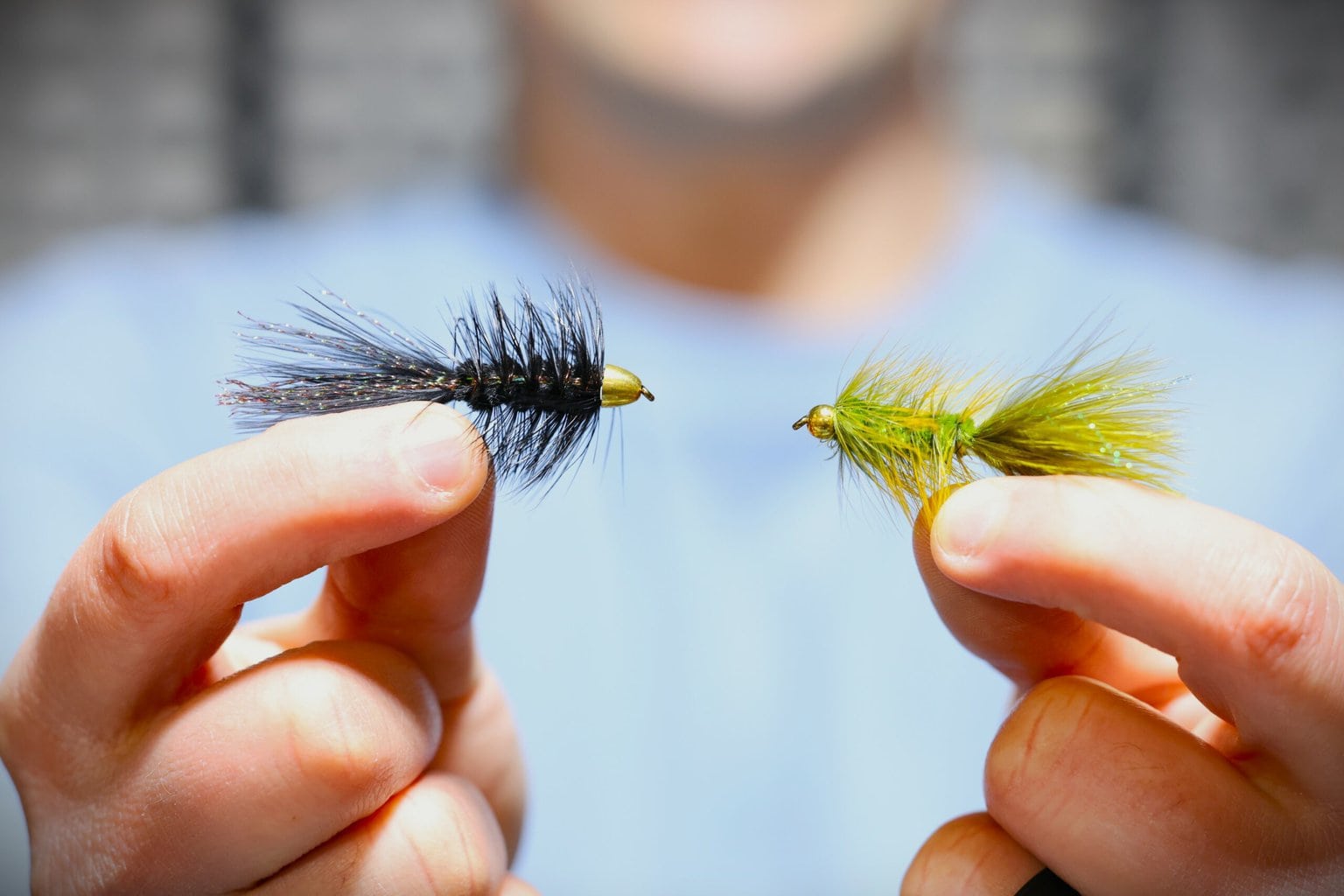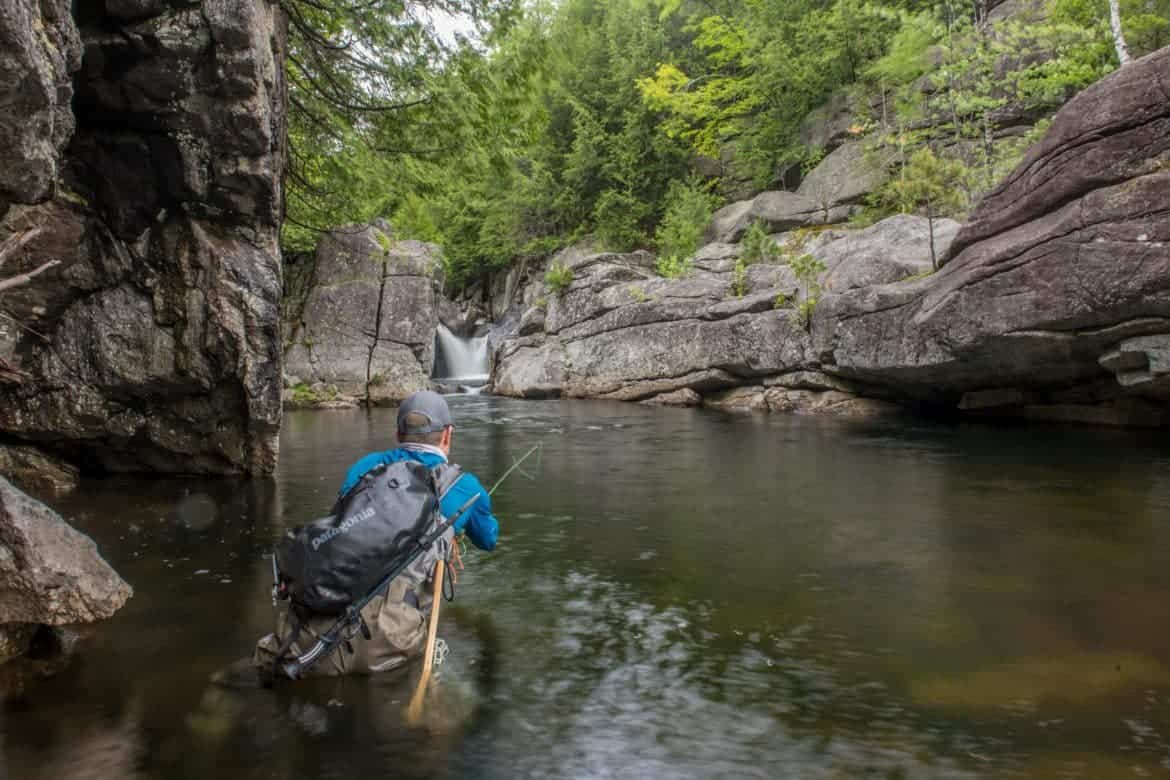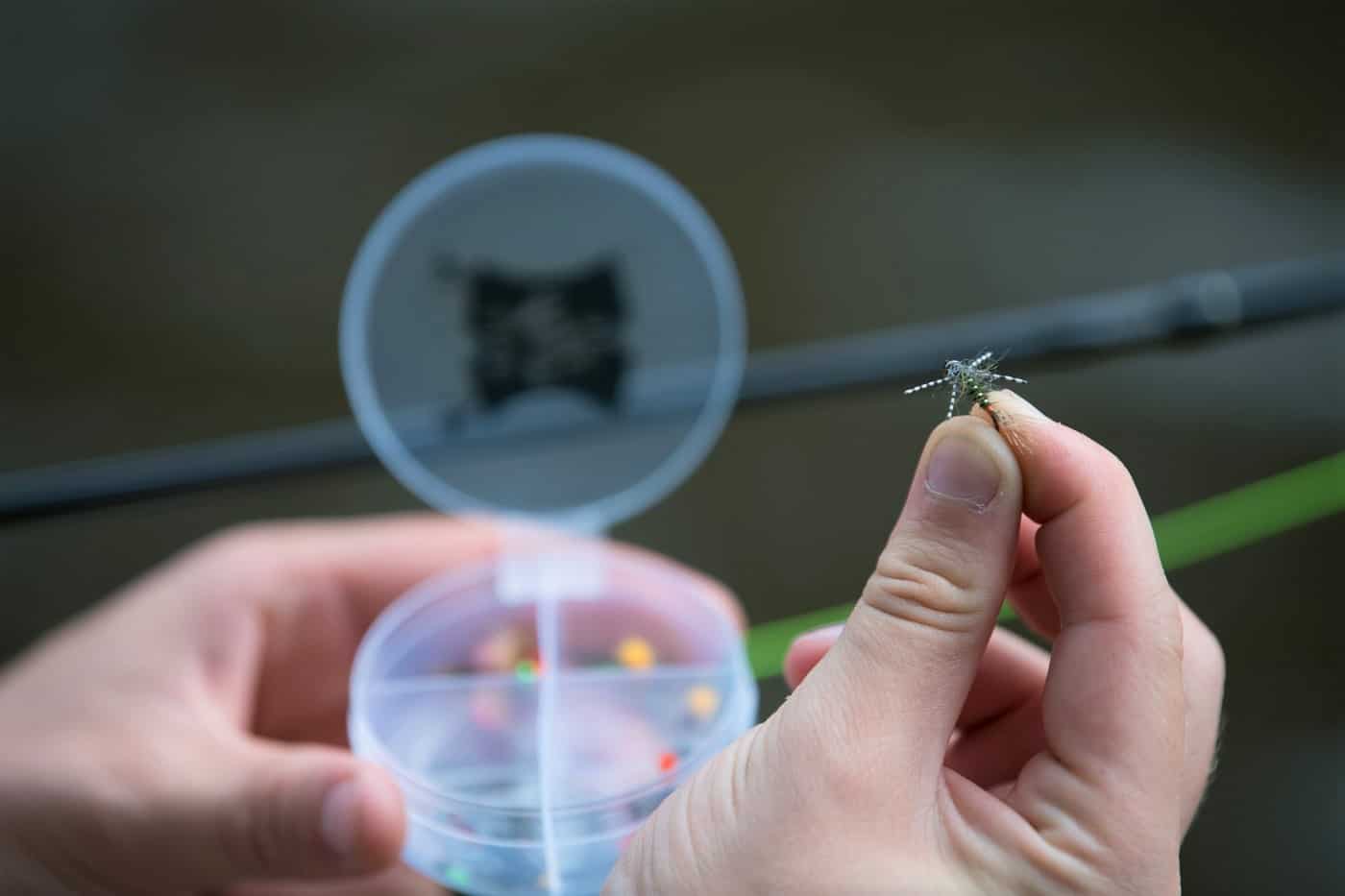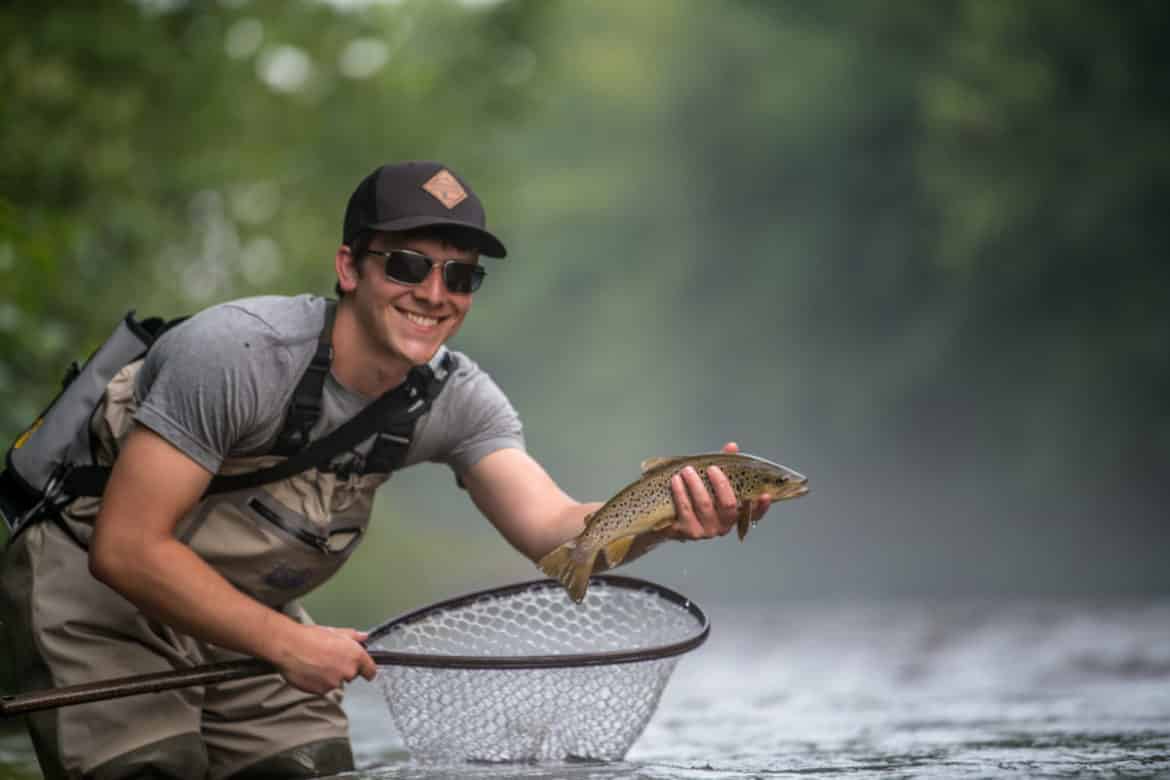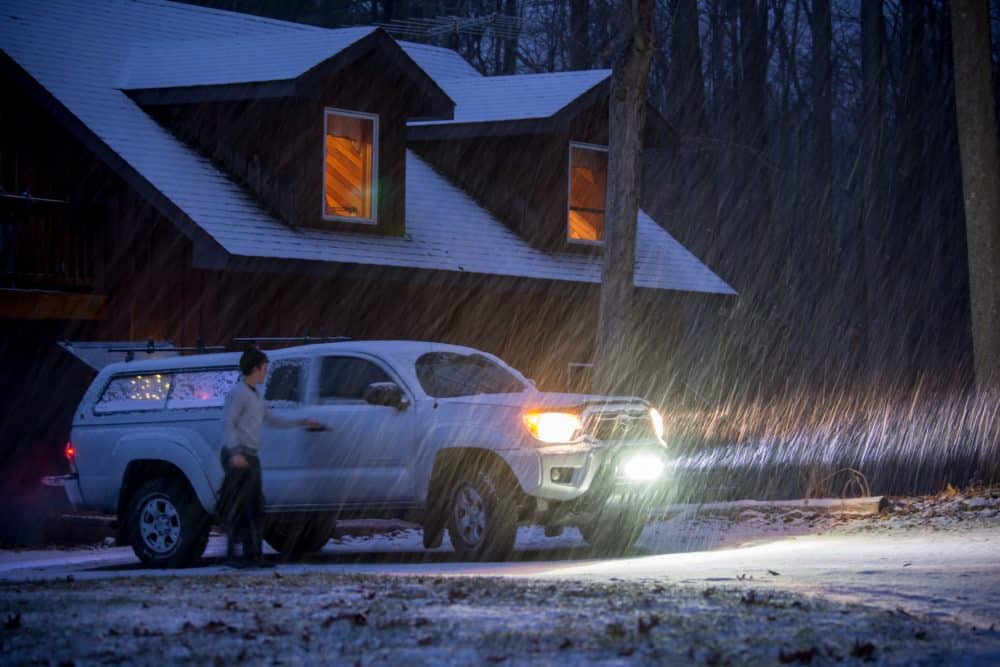How to Fly Fish a Woolly Bugger Fly
The Woolly Bugger or Wooly Bugger is one of the most simple, versatile, and effective flies in fly fishing history. Trout, panfish, bass, carp, redfish, bonefish; you name it, it will eat a bugger. With that said, the woolly bugger is essential for all fly fishers, especially beginners. In this piece, we focus on trout fishing and breaking down everything you need to know about fly fishing a woolly bugger.
Table Of Contents
What is a Woolly Bugger fly?
Woolly Buggers are a type of wet fly streamer used to fish beneath the surface. They are commonly handmade out of chenille, yarn, hackle, thread, flash tinsel, and marabou. Streamer flies are bigger sinking fly fishing flies that imitate minnows, crayfish, leeches, large insects, etc. that are usually retrieved for movement.
What makes the Woolly Bugger such a popular fly pattern across the United States is its versatility across all types of fly fishing from freshwater to saltwater. Woolly buggers can imitate a wide range of baitfish, leeches, crayfish, large nymphs, drowned terrestrial insects, shrimp, and crabs.
When tied in black, it imitates a leech or a nymph, while when tied in white it mimics a baitfish, and so on.
Another component of the Bugger that can be adjusted is the weight.
Without any weight, the woolly bugger fly rides in the upper water column, which can be great for trout feeding higher in the water or feeding in the shallows. If you need your fly to get down deep, adding a bead head or some wire to the fly does the job without compromising the presentation of the fly. I like using a weightless Bugger when I’m swinging my fly through a shallow riffle, and a weighted one when I encounter any pockets and pools. This versatility allows the Bugger to be fished in many different situations while targeting trout.
Like I said above, the Woolly Bugger can imitate many different food sources for trout, so to effectively fish it, you need to know what you are trying to mimic.
Can You Nymph With a Wooly Bugger?
While it is unconventional, yes, you can nymph with a wooly bugger. You can easily dead-drift a woolly bugger under a strike indicator or tight-line nymph the fly. I would argue that the best way is to jig it slightly across currents more like a soft hackle wet fly or streamer. I probably wouldn’t nymph a bugger in size larger than size #8. I’d much rather prefer a size #12, #10, or #8. Anything larger than that would be best for larger rivers and streams.

What is a Woolly Bugger?
Woolly buggers are a type of streamer fly, which are larger flies designed to sink. Woolly Buggers are incredibly versatile and they imitate all sorts of large aquatic insect larvae, leeches, baitfish, and minnows.
Woolly bugger flies come in all colors and sizes ranging from white to purple and sizes from #12 to size #2. Some have rubber legs while others come with or without bead heads.
So we offer the most popular colors olive, brown, black, olive / black, white, and a few variations that combine those colors. I typically fish the more natural colors. For the more bright and colorful options like chartreuse and yellow, I use these when naturals aren’t moving fish.
You can fish woolly buggers year-round and it is such a great fly during the spring, summer, and fall seasons. Even in the winter, we’ve landed trout on slow stripping a bugger. Plus, woolly buggers are great for all fish, not just trout. Just to name a few we’ve caught plenty of panfish, bass, steelhead, and salmon on all sorts of bugger variations.

How Do You Set Up a Woolly Bugger Fly?
Let’s talk about the easiest way to rig a wooly bugger.
The good news is you can fish woolly buggers on your standard floating fly line and can be fished on a 3-weight or heavier fly rod. The heavier the fly rod like a 5, 6, or 7 weight, the easier it is to cast woolly buggers and more hefty flies.
You’ll want to start with a shorter fly leader in a thicker diameter – a 6 foot fly leader is a good starting point in a 0x to 3x leader and tippet. You don’t have to use a shorter fly leader, but it will make casting easier and more accurate. If all you have is a 9 foot trout leader you can leave it as it is or clip it back a few feet into that thicker butt section to make it shorter. Then add some 0x to 3x tippet to the end with a blood knot.
One of the best ways to tie on a streamer like a Woolly Bugger is with a non-slip loop knot. This loop allows the woolly bugger to move more naturally in the water. Otherwise, you can use a standard improved clinch knot.

Here’s how to tie a non-slip loop knot.
The Non-Slip Loop Knot is a simple little knot for giving wet flies and streamers freedom of movement. As your streamer swings it can slide and twist along the loop to imitate the exact action baitfish or minnows would have in that same current.
- Make an over-hand knot a few inches from the end of your fly leader.
- Without pulling the over-hand knot tight, feed the end of your leader through the eye of the hook.
- Make 3 – 5 wraps forward on your leader.
- Feed the end of your leader back through the loop within your over-hand knot.
- Pull tight and snip the tag end.

How Do You Fish a Woolly Bugger Fly?
Woolly buggers can be fished in many different ways. It can be stripped, swung, and even dead-drifted like a nymph.
A favorite way to fish a streamer is to use it as a baitfish imitation. For this, cast your streamer a few feet upstream from where you think the fish might be holding. Typically, when casting a streamer – you’ll want to cast downstream at a slight angle.
Target banks, structures, shelves, pocket water, slack water, deep pools, and runs. Try and cast upstream of where you want your streamer to drift through. Then has your line flows downstream, try to time your stripping so your streamer or woolly bugger fly swims through directly past where you think fish are holding. I like to have it so my woolly bugger practically hits the side of the rock and swims right through the pool directly behind it.
Once the fly hits the water, give it quick, short strips to act like a scared minnow as your line and fly swing across the stream. Have it appear as if it’s fleeing from the fish. To give it more action, toy with the rod as if you’re playing with a cat by twitching your rod tip back as you retrieve it. Use your wrist to flick and twitch the end of your fly rod as you continue your short fast strips. Sure, it does seem like too much to be doing to attract a fish, but it sure does work.
You can use an active retrieve when streamer fishing with short strips, irregular erratic strips, and even long slow strips depending on the fishing situation and water conditions. Winter and early spring will call for slower strips, and summer and fall will require more movement as water temperatures are warmer and fish are more prone to chasing streamers.
Another great way to fish streamers is to imitate leeches and large nymphs. To do this, use a smaller streamer (size #10 or #8), such as a bead head Woolly Bugger. Unlike the previous method, for this, strip the fly very slowly or dead drift it under an indicator. Most leeches and nymphs can swim to some degree, but can’t fight a strong current, so let the water do most of the work. This method is very effective on tailwaters where baitfish can sometimes get churned up below the dam.
If you see fish chasing your streamer, that is a good sign. If they won’t commit to eating the fly, then change fly size, retrieve pattern, or fly pattern. If I am not actively moving fish and have changed things up a few times, then I give up and go with nymphing or a dry dropper rig.
Best Woolly Bugger Flies for Fly Fishing
Here are our thoughts on the best woolly bugger flies that you can tie or buy commercially. Use a 0x to 3x leader and tippet.

Bead Head Woolly Bugger
My absolute favorite is the standard Bead Head Woolly Bugger in either black, olive, brown, or white in sizes from #10 to size #8. My personal favorite is a black bugger in size #8. A close second is the same size #8 but in an olive color. I fish these deep in water at least 3 feet deep. Besides trout, I absolutely love tossing these woolly buggers at panfish and bass. For panfish, I’ll tie on a size #10 or #12.

Bite Me Bugger
Cone headed streamers dive a bit faster and move a little more water than the standard round beaded buggers. This cone head woolly bugger is made with a pulled dubbing body that pulsates in the water and adds to its durability. It’s a great choice for big water and is a great alternative to try when trout aren’t enticed by your standard woolly bugger.

Tungsten Jig Bugger
Jig-style woolly buggers have their time and place in fly fishing. These are best used for jigging, swinging, or nymphing. They aren’t really the best for stripping in on a standard streamer retrieve. I would recommend using these in size #10 or #12 and slowly jigging these through runs and tail-outs of pools by raising and lowering my rod. It’s best to do this when your line is swinging across the pool downstream of you. Black and olive are my favorite options to use.
Fly Fishing Made Easy 👍
Our Quarterly Fly Club ships 1,000’s of flies to anglers all across the United States. Receive curated fly assortments selected for the season with in-depth articles on how to fish them. Great for beginners to learn and for intermediates to discover new flies.

